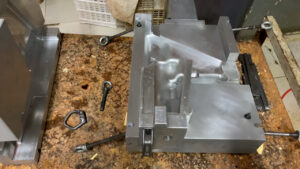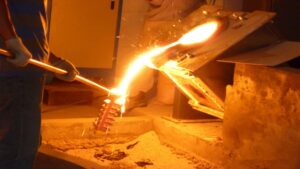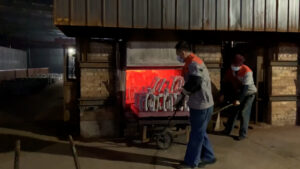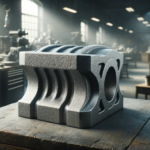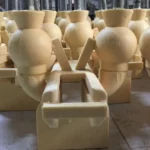Language:
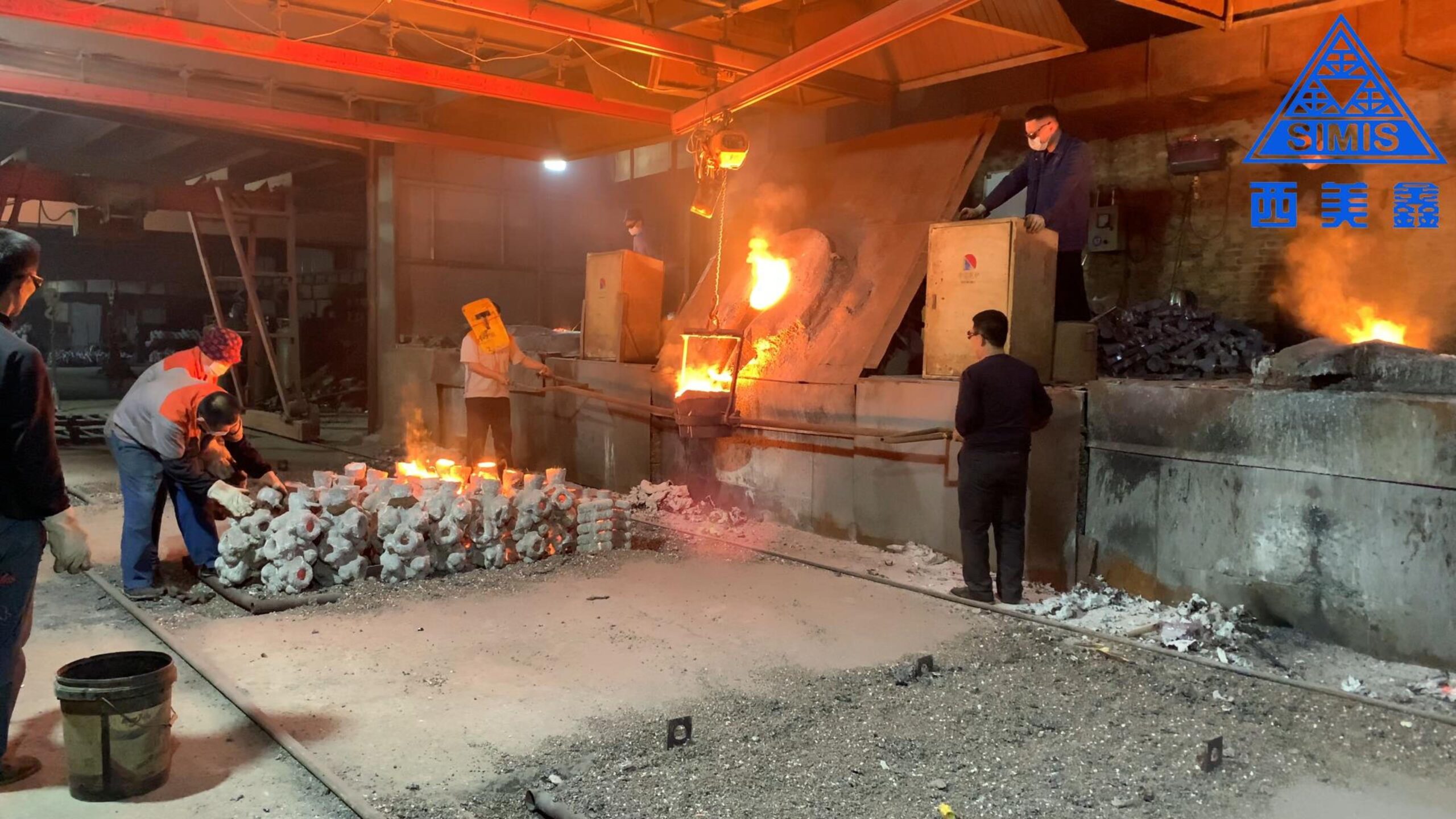
Investment Casting and Shell Mould Casting: A Comprehensive Comparison
In the world of metal casting, precision and versatility are paramount. Whether it’s crafting intricate jewelry pieces, manufacturing vital aerospace components, or creating artful sculptures, the choice of casting method can significantly impact the final product’s quality and cost-effectiveness. Two techniques that often take center stage in this realm are investment casting and shell mould casting (also known as shell moudling or shell casting).
In this article, we’ll embark on a journey to explore and dissect these two casting processes. We will uncover the intricacies of investment casting, where a ceramic shell is used to create fine details, and the shell mould casting, which relies on creating a two-part mould from a fine sand and resin mixture. By the end, you’ll gain a deep understanding of the advantages, disadvantages, and unique applications of each method, enabling you to make informed decisions for your own projects.
So, whether you’re a casting enthusiast looking to expand your knowledge or a professional seeking the ideal method for your next endeavor, let’s dive into the world of investment casting and shell moulding to unveil their secrets and differences.
Contents
Part 1: Investment casting
Investment casting, also known as lost wax casting, is a meticulous and intricate process that has been employed for centuries to create intricate metal parts with exceptional precision. This technique is particularly favoured in industries where detailed and complex components are required, such as aerospace, jewellery, and medical equipment manufacturing.
Definition and Process: Investment casting derives its name from the fact that a wax pattern, representing the final part, is “lost” or melted away during the casting process. Here’s an overview of how investment casting works:
- Pattern Creation: The process begins with the creation of a wax or plastic pattern, often with remarkable attention to detail. This pattern is an exact replica of the desired metal part.
- Assembly: Multiple wax patterns, known as the “tree,” are attached to a central wax sprue, forming a cluster.
- Ceramic Shell Formation: The wax assembly is then coated in a series of ceramic slurry layers. These layers dry and harden, forming a durable shell around the wax patterns. This ceramic shell will serve as the mould for the metal.
- Wax Removal: The assembly is heated, causing the wax to melt and flow out, leaving behind an empty cavity in the shape of the desired part within the ceramic shell.
- Casting: Molten metal is poured into the ceramic shell, filling the cavity. The metal solidifies as it cools.
- Shell Removal: After the metal has cooled and solidified, the ceramic shell is removed, revealing the cast metal part.
Advantages of Investment Casting: Investment casting offers several distinct advantages, making it a preferred choice for many applications:
- Precision: Investment casting can achieve incredible levels of detail and dimensional accuracy. This precision is ideal for crafting intricate and finely-detailed components.
- Complex Shapes: It is well-suited for producing parts with complex geometries and thin walls, as the ceramic shell can accurately capture these features.
Disadvantages of Investment Casting: While investment casting is a versatile technique, it does come with its own set of limitations:
- Cost: The process can be relatively expensive due to the detailed pattern creation, multiple steps, and the use of ceramics.
- Time-Consuming: Investment casting can be time-consuming, especially for larger production runs, as each part requires individual attention.
Applications: Investment casting finds application in a variety of industries, including:
- Aerospace: Components such as turbine blades, engine parts, and aerospace structural components often rely on investment casting for their intricate shapes and high performance.
- Jewellery: Fine jewellery designers use investment casting to create intricate and delicate pieces with a high level of detail.
- Medical Equipment: Investment casting is used for producing medical implants and devices where precision and biocompatibility are critical.
- Locomotive and Rail Industry: Investment casting is used for manufacturing critical parts in locomotives and rail systems, including brake components, couplers, and various structural parts.
- Machinery and Equipment Manufacturing: Investment casting is essential for producing intricate components used in pumps, valves, and fluid handling systems due to its ability to maintain tight tolerances and surface finishes. Gears, gear housings, and other gearbox components benefit from investment casting’s precision and durability, ensuring smooth machinery operation.
- Agriculture: Investment casting is employed in the agriculture sector to create components for farm equipment such as ploughs, tillage tools, and irrigation systems. Precision cast parts are also used in harvesting machinery, contributing to the efficiency and reliability of equipment used in crop harvesting.

Part 2: Shell mould casting
Shell mould casting is a precision casting method that is used to create complex metal parts with high accuracy and surface finish. Here’s an overview of the shell mould casting process.
Definition and Process: Shell mould casting, also known as shell moulding or shell casting, is a precision casting process used to create metal parts with high accuracy and a smooth surface finish. In shell mould casting, a two-part mould made of a sand and resin mixture is created around a pattern, which is an exact replica of the desired part. This mould, or “shell,” is then used to produce the final metal casting.
- Pattern Creation: The process begins with the creation of a pattern, which is typically made from metal or other materials. The pattern is an exact replica of the desired final part.
- Shell Mould Preparation: A two-part mould, often made of metal, is created by packing a fine sand mixture (usually resin-coated sand) around the pattern. This sand mixture forms the shell or mould. The mould is typically preheated to a certain temperature.
- Mould Assembly: The two halves of the mould are assembled, creating a complete shell mould with a cavity that matches the shape of the pattern.
- Pouring: Molten metal, such as aluminum, brass, or iron, is poured into the shell mould. The preheated mould helps ensure the metal flows evenly and fills the cavity.
- Cooling and Solidification: The poured metal cools and solidifies inside the shell mould. As it cools, it takes on the shape of the cavity within the mould.
- Mould Removal: Once the metal has cooled and solidified, the shell mould is removed by breaking or shaking it away, revealing the cast metal part inside.
- Finishing: The cast part may require some additional finishing processes, such as machining, grinding, or polishing, to achieve the desired surface finish and dimensions.
Advantages of Shell Mould Casting: Offers a range of advantages that make it suitable for specific applications:
- High Dimensional Accuracy: The process allows for the production of intricate and highly accurate parts with tight tolerances.
- Excellent Surface Finish: Shell mould castings typically have a smooth surface finish, reducing the need for extensive post-processing.
- Reduced Porosity: The fine sand used in shell mould casting helps minimize porosity and improve the integrity of the castings.
- Versatility: It is suitable for a wide range of metals and alloys.
- Cost-Efficiency: Shell mould casting is cost-effective for medium to high production volumes.
Disadvantages of Shell Mould Casting: While shell casting has its merits, it also comes with certain limitations:
- Limited to Small to Medium-Sized Parts: Shell mould casting is typically better suited for producing small to medium-sized parts. It may not be as efficient or cost-effective for very large or oversized components.
- Complexity of Patterns: Creating complex patterns can be challenging and time-consuming, especially for intricate designs. This complexity can increase both the cost and production time.
- Not Suitable for High-Volume Production: While shell mould casting is suitable for medium to high production volumes, it may not be the most efficient option for extremely high-volume production due to the time and labor involved in mould preparation.
Applications: Shell mould casting, or shell moulding, finds its niche in several industries, including:
- Automotive Industry: Shell mould casting is used to produce critical components in the automotive sector, such as engine parts (cylinder heads, intake manifolds, and exhaust manifolds), suspension components, and transmission parts. The process’s ability to create lightweight yet robust parts makes it valuable in improving fuel efficiency and performance.
- Aerospace Industry: In aerospace, where precision and reliability are paramount, shell mould casting is used to manufacture components for aircraft and spacecraft. This includes turbine blades, aircraft engine components, and structural parts.
- Industrial Machinery: Shell mould casting is employed to produce components for industrial machinery and equipment, such as pump housings, valve bodies, and gearboxes. The process’s accuracy and the ability to achieve intricate geometries are valuable in this sector.
- Energy Sector: In the energy industry, shell mould casting is utilized to create parts for power generation equipment, including turbine components, heat exchanger tubes, and components for renewable energy systems.
- Medical Equipment: Medical device manufacturers use shell mould casting to produce precise and intricate components for various medical equipment, such as orthopedic implants, dental prosthetics, and diagnostic instruments.
- Art and Sculpture: In the realm of art and sculpture, shell mould casting provides artists with a means to create detailed metal sculptures and artwork. Its ability to reproduce intricate details is valued by artists seeking precision in their creations.
- Tool and Die Making: Shell mould casting is used in tool and die making to produce specialized tooling components that require high accuracy and durability.
- General Manufacturing: The process is also employed in general manufacturing for a wide range of applications, including producing decorative hardware, architectural components, and other precision parts.
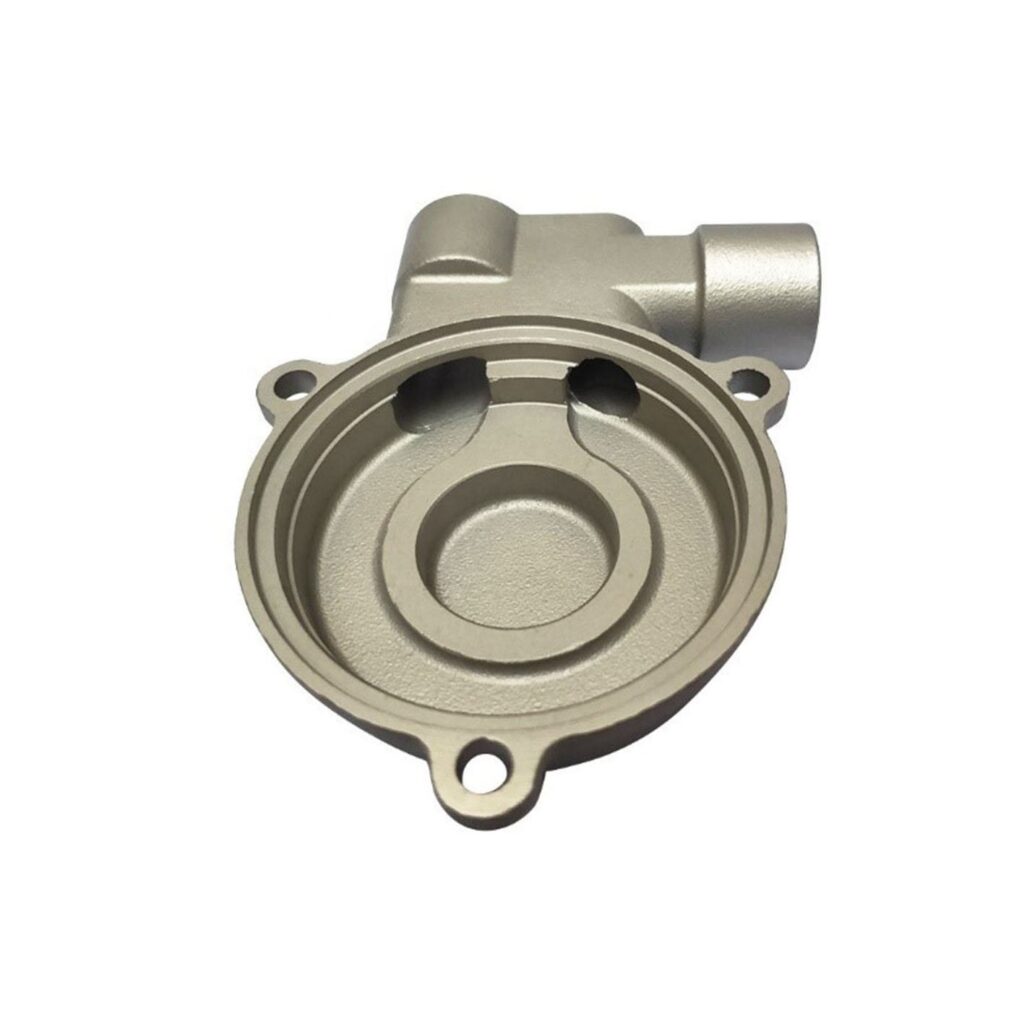
Part 3: Comparison
Process Comparison:
Let’s begin our exploration by comparing the fundamental processes of investment casting and shell moulding.
Investment Casting Process: Investment casting, also known as lost wax casting, initiates with the creation of intricate wax or plastic patterns, mirroring the final metal components. These patterns are then assembled into clusters, forming what is commonly referred to as the “tree.” Following this, multiple ceramic slurry layers are applied, each drying and hardening to create a robust ceramic shell. Subsequently, the wax is melted away, creating a hollow mould. The molten metal is introduced into the ceramic shell, filling the cavity created by the melted wax. Once the metal cools and solidifies, the ceramic shell is removed, revealing the final cast metal part.
Shell mould casting process, also known as shell molding, is a precision metal casting process that involves creating a two-part mould from a fine sand and resin mixture, heated to a specific temperature. A pattern, typically made of metal, is used to form the desired part’s shape within the mould. Once the mould is assembled, molten metal is poured into it.
As the metal cools and solidifies, it takes on the shape of the pattern within the mould. After solidification, the shell mould is removed, leaving behind a precise, intricately detailed metal casting. Shell mould casting is valued for its ability to produce accurate, finely finished components, making it a preferred choice in industries like automotive, aerospace, and art and sculpture.
Advantages and Disadvantages Comparison:
Now, let’s weigh the pros and cons of these two casting techniques side by side.
Investment Casting Advantages:
- Exceptional Precision: Investment casting excels in creating intricate and finely detailed components, making it ideal for applications where precision is paramount.
- Complex Shapes: The method is well-suited for producing parts with complex geometries and thin walls, capturing these intricate features accurately.
Investment Casting Disadvantages:
- Cost: Investment casting can be relatively expensive due to the meticulous pattern creation, multiple process steps, and the use of ceramics.
- Time-Consuming: It can be time-consuming, especially for larger production runs, as each part necessitates individual attention.
Shell Mould Casting Advantages:
- Superior Surface Finish: Shell mould casting is favoured when excellent surface finishes are needed, making it ideal for components where aesthetics are crucial.
- High Dimensional Accuracy: The process allows for the production of intricate and highly accurate parts with tight tolerances.
Shell Mould Casting Disadvantages:
- Complex Mould Creation: The creation of the ceramic shell can be more intricate and time-consuming compared to traditional investment casting.
- Limited Scalability: Large-scale production can be challenging due to the manual labour involved in creating and removing the ceramic shells.
Suitability and Application Comparison:
Let’s delve into which method is better suited for different types of projects and industries.
Investment Casting Suitability: Investment casting is highly suitable for projects and industries that require:
- Intricate and detailed components.
- Precision and accuracy.
- Complex geometries.
- Small to medium-sized parts.
- Applications such as aerospace, jewellery, and medical equipment.
Shell Mould Casting Suitability: Shell Moulding, on the other hand, shines in projects and industries that demand:
- Exceptional surface finish.
- Larger and more robust components.
- Aesthetic appeal.
- Applications such as automotive, marine, architectural hardware, and decorative components in art and sculpture.
Understanding the strengths and weaknesses of both investment casting and shell casting is vital in choosing the appropriate method for your specific project requirements. In the subsequent section, we will conclude our comparison and offer insights to aid you in navigating the intricate world of metal casting with confidence.
Part 4: Conclusion
As we conclude our exploration of investment casting and shell mould casting, it is evident that both techniques have their unique strengths and limitations. The choice between these casting methods should be guided by the specific requirements of your project and industry.
Investment casting, with its precision and capability to produce intricate components, thrives in applications where fine detail and accuracy are essential. It is the go-to choice for aerospace, jewellery, and medical equipment manufacturers.
Shell mould casting, or precision lost wax casting, stands out for its ability to deliver exceptional surface finishes and cater to larger and more robust components. It finds its place in automotive, marine, architectural hardware, and decorative art industries.
In the world of metal casting, making informed decisions is crucial. Whether you’re crafting the smallest jewellery piece or manufacturing vital components for a massive locomotive, choosing the right casting method can greatly influence your product’s quality, performance, and cost-effectiveness.
Taiyuan Simis Investment Co., Ltd. is a Chinese professional investment casting manufacturer, we take pride in our expertise and proficiency in both investment casting and shell moulding techniques. Our extensive experience and dedication to excellence ensure that your casting needs are met with precision and reliability. We understand the unique demands of different industries and projects, and we are well-equipped to deliver high-quality castings that align with your specific requirements.
With Taiyuan Simis Investment Co., Ltd. as your casting partner, you can have confidence in your choice, knowing that you have a trusted ally in the intricate world of metal casting. Whether it’s intricate precision or impeccable surface finish, we have the knowledge and resources to bring your vision to life.
In your next casting project, consider Taiyuan Simis Investment Co., Ltd. as your casting solutions provider, and experience the difference that expertise, dedication, and precision can make in your final product.
Thank you for joining us on this journey through the realms of investment casting and shell mould casting. We hope this comparison has empowered you to make informed choices and inspired you to explore the endless possibilities that lie within the world of metal casting.
